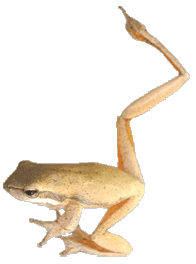What are Choanoflagellates?
 Michael Anissimov
Michael Anissimov
The choanoflagellates (meaning "collared organism with a tail") are thought to be similar to the unicellular organism from which all animals evolved, and the closest living unicellular relative to animals. Choanoflagellates are a type of protozoa, meaning a unicellular eukaryote (complex-celled organism), in contrast to other unicellular organisms such as bacteria and archaea. Like many other microbes, choanoflagellates form colonies, which may have been the precursors of the first multicelullar organisms.
Most choanoflagellates are sessile, meaning they stay in one place, fastened to the ocean floor with a stalk. The flagellum whips rapidly, driving water upwards. This flagella is surrounded by microvilli that make up the "collar" that gives the microbe its name. As the flagellum propels upwards to create a suction current, causing bits of food to get stuck to the microvilli. This strategy is called filter feeding, and it is also used by baleen whales, krill, sponges, and other marine organisms. The cell body of the choanoflagellate is also covered by a shield called a theca.
Like many other microorganisms, choanoflagellates are ubiquitous in aquatic environments. They have even been found 100 m (328 ft) below Antarctic ice sheets.

The genome of the choanoflagellate has been sequenced, and subsequent analysis has shown that they are closely related to animals. In their behavior, choanoflagellates are among the most complex of protozoa. They even build small silica "houses" called lorica (meaning "body armor"). For further evidence of the close relationship between choanoflagellates and the animals, we see that there are specialized cells in sponges called choanocytes ("collared cells") which bear a great resemblance to choanoflagellates. Choanocytes can also be found in nematodes.
Choanoflagellates are a variety of nanoplankton, referring to the smallest (single-celled) form of organisms in the sea. As such, they are consumed by a variety of larger organisms, including krill and many others. When a choanoflagellate dies, it quickly becomes dislodged from the ocean floor, floating around until it is consumed.
AS FEATURED ON:
AS FEATURED ON:











Discuss this Article
Post your comments